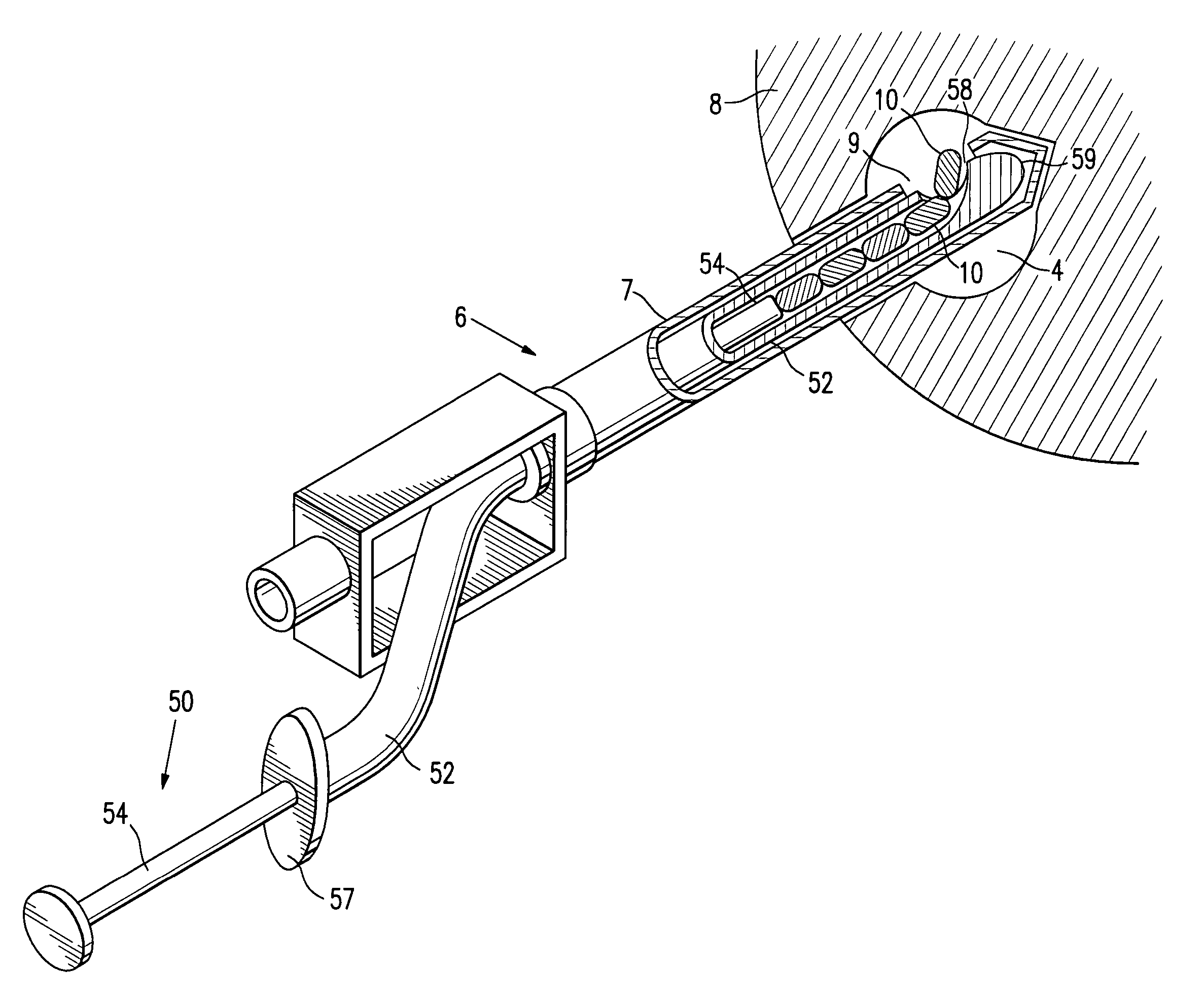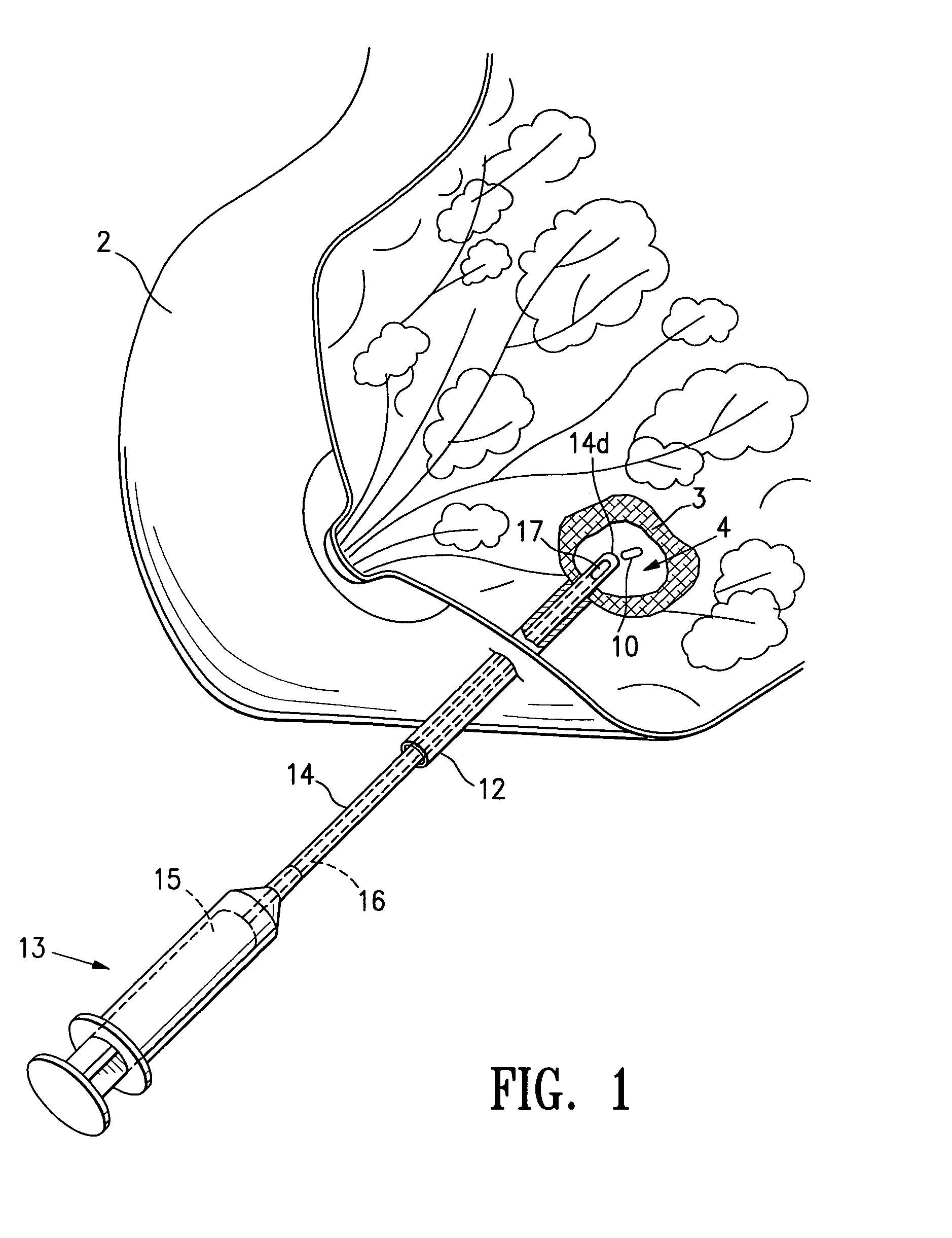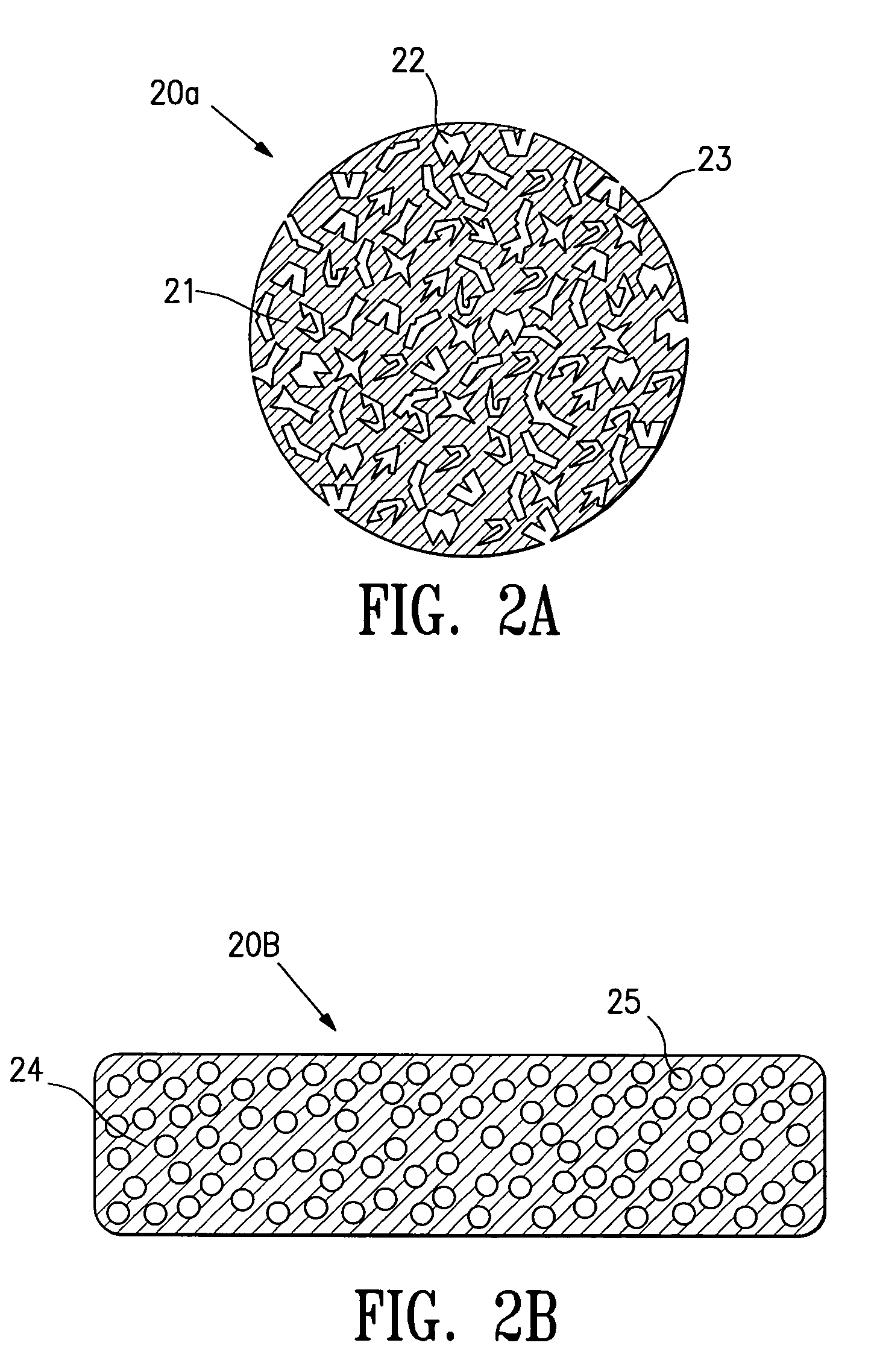Tissue site markers for in vivo imaging
a tissue site marker and in vivo imaging technology, applied in the field of tissue site markers for in vivo imaging, can solve the problems of radiographically visible tissue features, follow-up treatments being misdirected to an undesired portion of the patient's tissue, and may be removed, altered or obscured, etc., to achieve accurate fixation and high reflectivity of incident us energy
- Summary
- Abstract
- Description
- Claims
- Application Information
AI Technical Summary
Benefits of technology
Problems solved by technology
Method used
Image
Examples
Embodiment Construction
[0046]The following detailed description, and the accompanying drawings to which it refers are provided for purposes of exemplifying and illustrating representative examples and embodiments of the invention only, and are not intended to limit the scope of the invention in any way, and do not exhaustively illustrate and describe all possible embodiments and configurations in which one or more features of the present invention may take physical form.
[0047]All patents and patent applications cited in this specification are herein incorporated by reference as if each individual patent or patent application were specifically and individually indicated to be incorporated by reference.
[0048]FIG. 1 shows the use and insertion into a biopsy site of any one of the biopsy site marker embodiments of the invention described herein. FIG. 1 is a perspective view of a human breast 2 having a lesion 3 from which a biopsy specimen has been removed, thereby forming a biopsy cavity 4 within the lesion ...
PUM
 Login to View More
Login to View More Abstract
Description
Claims
Application Information
 Login to View More
Login to View More - R&D
- Intellectual Property
- Life Sciences
- Materials
- Tech Scout
- Unparalleled Data Quality
- Higher Quality Content
- 60% Fewer Hallucinations
Browse by: Latest US Patents, China's latest patents, Technical Efficacy Thesaurus, Application Domain, Technology Topic, Popular Technical Reports.
© 2025 PatSnap. All rights reserved.Legal|Privacy policy|Modern Slavery Act Transparency Statement|Sitemap|About US| Contact US: help@patsnap.com



